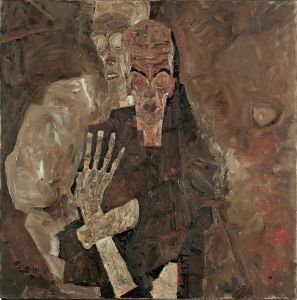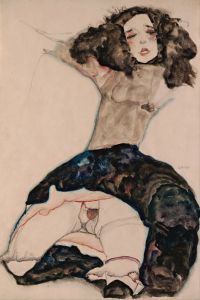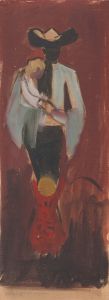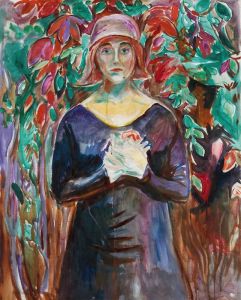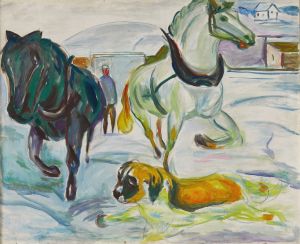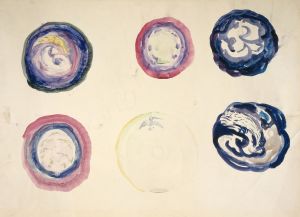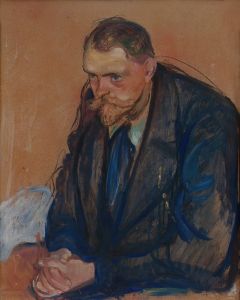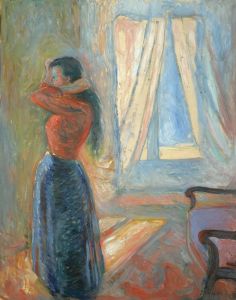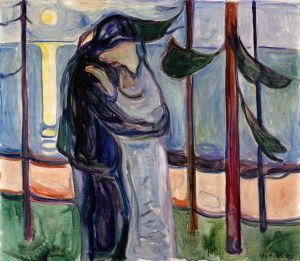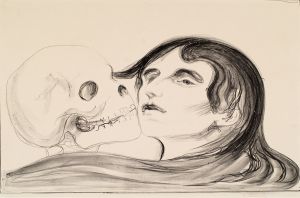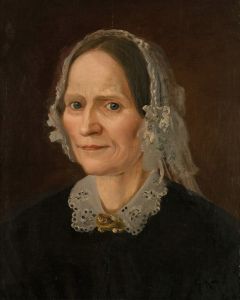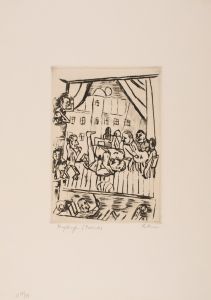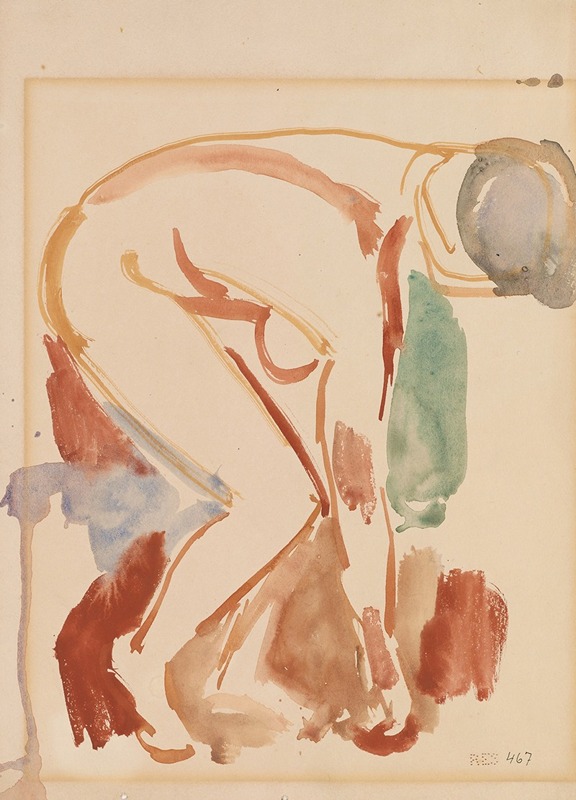
Framoverbøyd kvinneakt
A hand-painted replica of Edvard Munch’s masterpiece Framoverbøyd kvinneakt, meticulously crafted by professional artists to capture the true essence of the original. Each piece is created with museum-quality canvas and rare mineral pigments, carefully painted by experienced artists with delicate brushstrokes and rich, layered colors to perfectly recreate the texture of the original artwork. Unlike machine-printed reproductions, this hand-painted version brings the painting to life, infused with the artist’s emotions and skill in every stroke. Whether for personal collection or home decoration, it instantly elevates the artistic atmosphere of any space.
Edvard Munch, a renowned Norwegian painter, is best known for his evocative and emotionally charged works that explore themes of existentialism, love, and death. One of his lesser-known works, "Framoverbøyd kvinneakt," which translates to "Bent-Forward Female Nude," exemplifies his continued exploration of the human form and psyche.
"Framoverbøyd kvinneakt" is a painting that showcases Munch's distinctive style, characterized by bold colors, expressive lines, and a focus on emotional depth. Although specific details about the creation date and the circumstances surrounding this particular painting are not well-documented, it is consistent with Munch's broader body of work from the late 19th and early 20th centuries. During this period, Munch was deeply influenced by Symbolism and the broader Expressionist movement, which sought to convey emotional experiences rather than physical reality.
The painting depicts a female figure in a bent-forward pose, a position that suggests introspection or vulnerability. Munch often used the human body as a vehicle to explore complex emotional states, and this work is no exception. The choice of a nude figure is significant, as nudity in art has historically been associated with themes of purity, truth, and the unadorned human condition. In Munch's hands, the nude becomes a powerful symbol of the inner turmoil and existential angst that he frequently explored in his art.
Munch's use of color and form in "Framoverbøyd kvinneakt" is typical of his style, which often eschewed realistic representation in favor of more abstract and expressive techniques. The colors in the painting may be vivid and contrasting, drawing the viewer's attention to the emotional intensity of the scene. Munch's brushwork is likely to be loose and dynamic, further emphasizing the emotional content over precise detail.
Throughout his career, Munch was influenced by personal experiences and the broader cultural and philosophical currents of his time. His works often reflect his own struggles with mental health, as well as his interest in themes of love, anxiety, and mortality. While "Framoverbøyd kvinneakt" may not be as widely recognized as some of his other works, such as "The Scream" or "Madonna," it nonetheless contributes to the rich tapestry of his artistic legacy.
Munch's impact on the art world extends beyond his own creations. His work laid the groundwork for future generations of artists, particularly those associated with the Expressionist movement. His willingness to delve into the darker aspects of the human experience and to experiment with form and color has inspired countless artists to push the boundaries of traditional artistic expression.
In summary, "Framoverbøyd kvinneakt" is a testament to Edvard Munch's enduring fascination with the human condition and his ability to convey deep emotional truths through his art. While specific details about this painting may be scarce, its significance lies in its representation of Munch's broader artistic themes and his contribution to the evolution of modern art.





